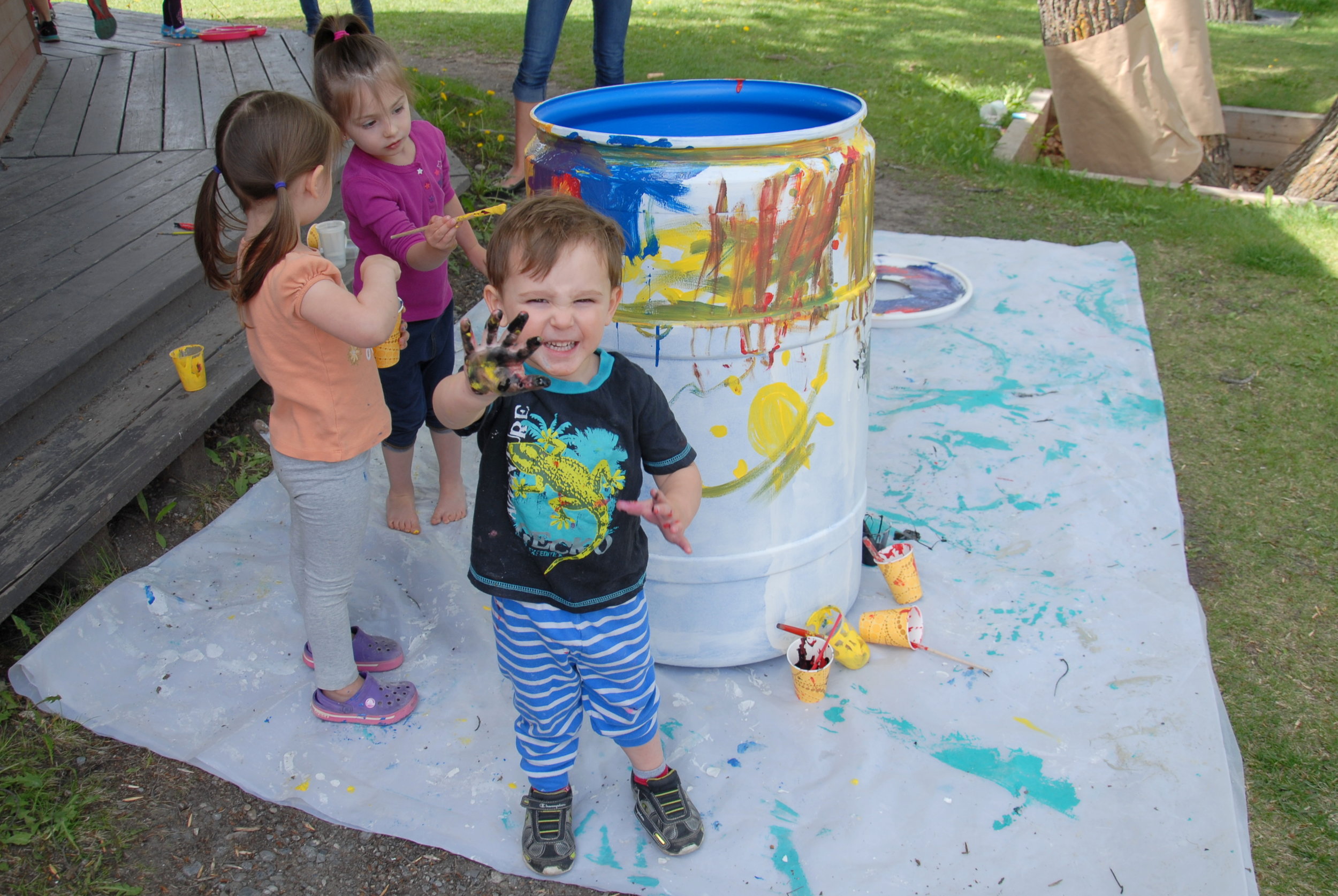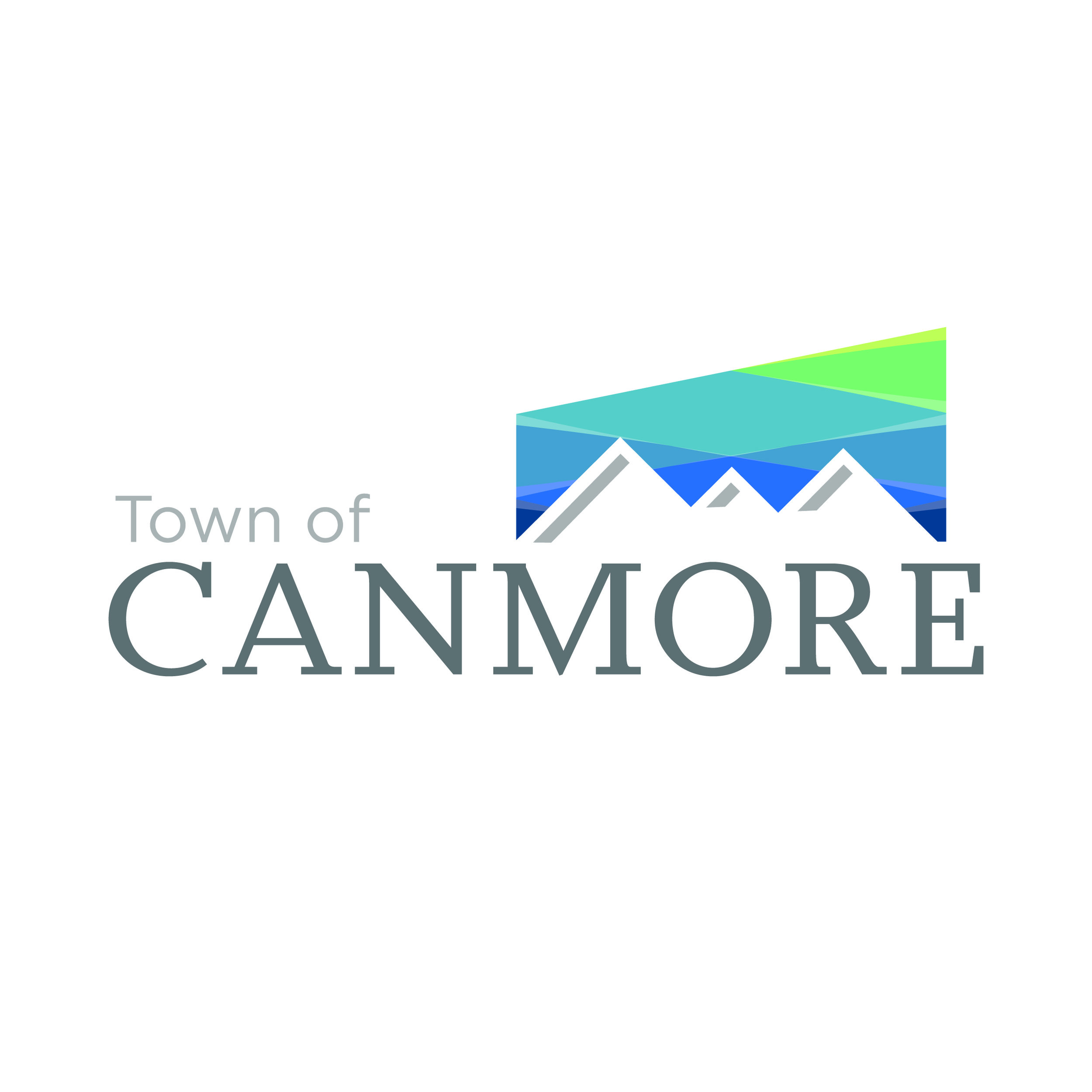Community Goals
By 2035, the Town of Canmore aims to reduce residential water consumption by 50% per capita below 2000 levels.
what you CAN DO
Keeping Canmore’s Water Clean
Canmore’s surface and groundwater sources are vulnerable to pollution. We can help to keep our water clean by carefully managing our vehicles, homes and yards, and by properly disposing of chemicals, garbage, and pet waste.
Car Washing and Maintenance
Canmore's municipal bylaws prohibit washing vehicles in your driveway or on the road. Take your vehicles to a commercial car wash. Wash water contains residues from soaps, gasoline, oils and heavy metals. A commercial car wash collects the soapy and dirty water, draining it directly into the sanitary sewer to be properly treated at the town’s Wastewater Treatment Plant. Note that it’s prohibited to drain any soaps, mud, dirt, solvents, petroleum products or other non-biodegradable substances onto public roadways.
Have vehicles serviced regularly to avoid fluid leaks. If you do this work yourself, place a drip pan or tarp underneath to catch drips and spills. Recycle your used oil, oil filters and antifreeze at the Town of Canmore Recycling Depot (115 Boulder Crescent).
Around the House
Instead of spraying with a hose, sweep driveways and garages and dispose of the waste materials in the garbage. Canmore’s bylaws prohibit flushing dirt, garbage, and non-biodegradable materials out onto the street.
Firmly seal and store all used household chemicals and paint. Dispose of them properly at the Boulder Recycling Depot. Clean brushes by first wiping off excess paint with a rag and then rinsing in a sink.
Yard and Garden
Use slow release, natural fertilizers such as compost and low toxicity pest control products like insecticidal soaps and horticultural oils. Avoid the use of chemical fertilizers and pesticides.
Mow the grass high (2 inches). Tall grass develops a deep root system that helps to trap and filter water, and prevents weeds from sprouting. Leave grass clippings on the lawn to act as a fertilizer.
Mulch and seed bare soil as soon as possible, before rainfall, to avoid muddy runoff into local creeks.
Pets
Clean-up pet waste from your yard regularly. Run-off during spring melt or rain events can carry pet waste and pathogens into the storm sewers and creeks.
Carry a bag with you when taking your dog for a walk and always pick-up after your pet. Throw pet waste into an appropriate garbage bin for disposal.
Reducing Water Use
Reducing your water use (and water bill) at home is easy to achieve. Is it time to replace an appliance like your dishwasher or washing machine? Look for ENERGY STAR certified appliances. The ENERGY STAR symbol indicates that the product meets strict specifications for efficiency.
Saving Water at Home
Find and fix leaks! Leaking toilets, taps, or pipes can quietly waste thousands of litres of water per year, costing you lots of money. Test your toilet for leaks: remove the lid and add several drops of food colouring to the water tank. Wait 15 minutes and then look in the bowl; if any colour appears then there’s a leak.
Install low-flow aerators on faucets to save up to 40% of water used for hand washing. Turn taps off while brushing teeth, washing hands and face or shaving.
Replace standard shower heads with low-flow shower heads to save up to 50% of water used for showering. Try also reducing the water level in your bath tub by an inch or two, or take shorter showers.
Replace standard toilets with low-flow or dual flush toilets to save up to 50% of water used for flushing.
Replace a standard top load washing machine with a high efficiency front load washer to save up to 25% of water used for clothes washing. Wait for a full load of laundry before running the machine.
Saving Water in Your Yard
Water lawns and gardens only as needed. One inch of water (the depth of a Frisbee), once per week (including rainfall), is generally enough to keep a lawn healthy. Alternatively, instead of a lawn consider xeriscaping – low maintenance landscaping with rocks, shrubs and drought-tolerant plants. Xeriscaping is particularly well suited to our cool dry climate in Canmore.
Water in the early morning or evening during cooler temperatures to reduce water loss due to evaporation.
Use a rain barrel (or two) to catch and recycle rainwater. Visit the ‘rain barrel 101’ link below. Direct the downspouts from your roof onto your lawn or yard, and away from paved surfaces.
Choose native and locally adapted plants and grasses, which are naturally resistant to local insects and diseases and require far less water. Check out this list of recommended plant species for landscaping in the Bow Valley.
MORE ABOUT CANMORE’S WATER SUPPLY
Can You Drink Canmore’s Tap Water?
Yes. Canmore produces high quality tap water that meets or exceeds strict provincial and federal operating regulations. Our drinking water is monitored for 75 different water quality parameters with more than 5,000 tests performed annually. No additional fluoride is added to Canmore’s drinking water, although a trace amount of fluoride from geological sources is naturally present in our local water.
Bottled water is not necessarily any cleaner or safer than our municipal tap water. Many popular brands of bottled water are simply filled from municipal tap water sources. There are also growing concerns about microplastics and contaminants leaching from the plastic bottles into the water. Bottled water is also significantly more expensive per litre than tap water, and requires substantially more energy to produce and transport.
Where Does Canmore’s Water Come From?
Canmore is located in the upper Bow River watershed, upstream of major industry, agriculture, and large urban centers. Surrounded by parks and protected areas, our water sources are naturally very clean. The town produces more than 2.8 million cubic metres of drinking water each year, and delivers it through more than 100 kilometres of pipes to all parts of town and the nearby communities of Harvie Heights and Deadman's Flats. Canmore’s drinking water is not taken directly from the Bow River, but rather from two other sources:
Groundwater: A shallow underground aquifer flows beneath downtown Canmore and is hydrologically connected to the Bow River
The Rundle Forebay: This reservoir near the Canmore Nordic Centre is primarily supplied by the Spray Lakes reservoir in Kananaskis Country via a network of canals and hydroelectric facilities.
Homes and businesses on the north side of the TransCanada Highway receive water from two downtown wells. It is sent to Pumphouse No. 1 and treated with chlorine. Treated water is stored in six underground reservoirs until distribution.
Homes and businesses south of the Bow River, most of central Canmore, Deadman’s Flats and Harvie Heights receive water from the Rundle Forebay. It is sent to Pumphouse No. 2 where it’s filtered and treated with chlorine, gravity filtration and ultraviolet light disinfection.
Where Does Canmore’s Wastewater Go?
Canmore’s toilets, sinks, and floor drains are connected to a network of more than 100 kilometres of sewer pipes leading to the town’s Wastewater Treatment Plant. This modern facility treats over 5 million cubic meters of wastewater per year. Treated wastewater is discharged into the Bow River, which flows to the City of Calgary, joining the South Saskatchewan River and eventually flowing to Hudson’s Bay.
Canmore’s wastewater effluent is treated to high standards and carefully monitored and tested so as to maintain the health of the river and water quality for downstream users. Additional water quality tests are performed upstream and downstream of the town and the Wastewater Treatment Plant. Results from these tests indicate that the plant is functioning well and minimizing Canmore's impact on the Bow River.
Storm Water
Storm water is the overland flow of water primarily from rain or melting snow. Within the town of Canmore, storm water flows over a wide variety of artificial surfaces including rooftops, paved streets, sidewalks, parking lots, and lawns, collecting and transporting substances such as pet waste, road salt and sand, pesticides and fertilizer, oil and grease, soaps and detergents, litter and a host of other potential pollutants. This runoff is collected by a network of approximately 35 km of storm sewers, most of which are located in newer subdivisions on the north side of the Trans Canada Highway and south side of the Bow River. Due to the very flat terrain on the valley floor, the older sections of Canmore do not have storm sewers. In these areas, storm water is collected via drywells, which allow the storm runoff to percolate down into the ground.
Storm water drains from storm sewers or drywells directly into nearby creeks, rivers, and groundwater aquifers without receiving treatment at the Wastewater Treatment Plant.
Thanks to Christopher Vincent, Jim Ridley, Christian Dubois, Charlie Bredo and the Town of Canmore for their help in preparing these materials.









